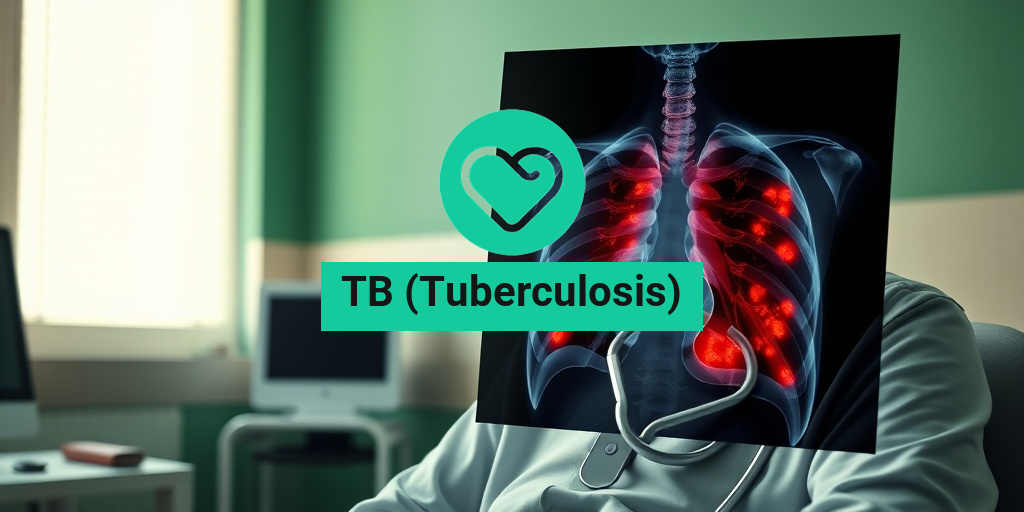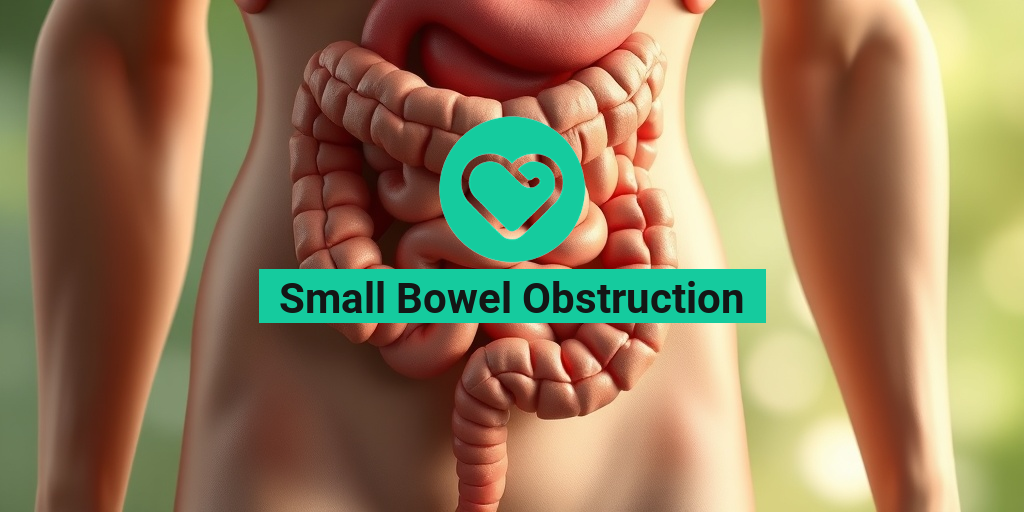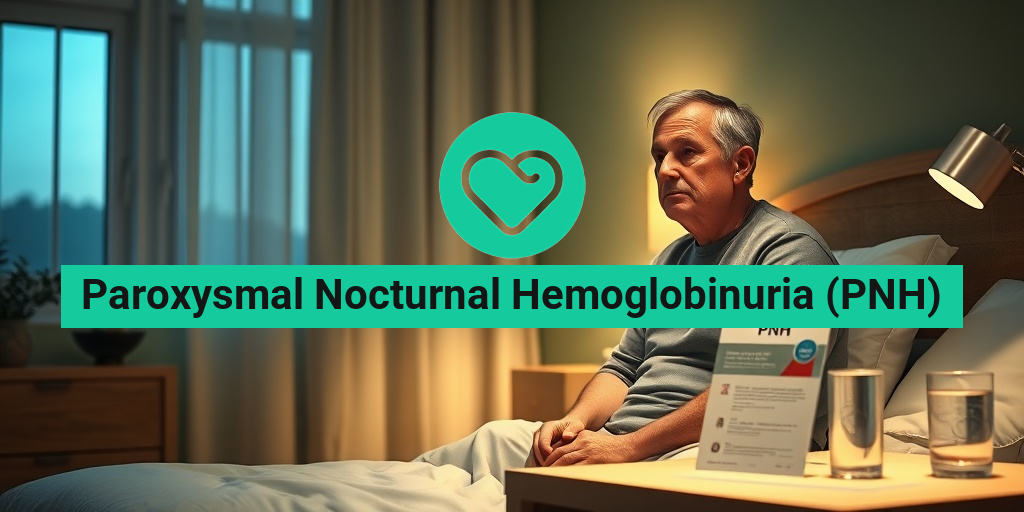What Is Tuberculosis?
Tuberculosis, commonly referred to as TB, is a contagious bacterial infection primarily affecting the lungs, although it can impact other parts of the body as well. The disease is caused by the bacterium Mycobacterium tuberculosis, which spreads through the air when an infected person coughs, sneezes, or talks. This means that TB can easily be transmitted in crowded or poorly ventilated spaces, making it a significant public health concern worldwide.
Despite being a preventable and treatable disease, TB remains one of the leading causes of death globally, particularly in low- and middle-income countries. According to the World Health Organization (WHO), millions of people are infected with TB each year, highlighting the importance of awareness and education about this disease.
Types of Tuberculosis
There are two main forms of tuberculosis:
- Latent TB: In this form, the bacteria remain inactive in the body and cause no symptoms. Individuals with latent TB are not contagious but may develop active TB later in life, especially if their immune system becomes weakened.
- Active TB: This is the more severe form of the disease, where the bacteria are active and multiplying. Active TB can cause serious health issues and is contagious, requiring immediate medical attention.
Risk Factors for Tuberculosis
Several factors can increase the risk of contracting TB, including:
- Living in or traveling to areas with high TB rates
- Having a weakened immune system due to conditions like HIV/AIDS or diabetes
- Being in close contact with someone who has active TB
- Substance abuse, particularly alcohol and drugs
- Living in crowded or unsanitary conditions
Understanding these risk factors is crucial for prevention and early detection of TB. If you suspect you may be at risk, consulting a healthcare professional is essential.
Tuberculosis Symptoms
Recognizing the symptoms of TB is vital for early diagnosis and treatment. The symptoms can vary depending on whether the TB is latent or active. Here are some common signs to watch for:
Common Symptoms of Active TB
- Persistent Cough: A cough that lasts for three weeks or longer, often producing sputum or blood.
- Chest Pain: Discomfort or pain in the chest, especially when coughing or breathing.
- Unexplained Weight Loss: Significant weight loss without trying can be a red flag.
- Fatigue: A general feeling of tiredness or weakness that doesn’t improve with rest.
- Fever and Night Sweats: Persistent fever and excessive sweating at night are common symptoms.
Symptoms of Latent TB
Individuals with latent TB typically do not exhibit symptoms. However, if the infection becomes active, the symptoms listed above may develop. Regular screening and testing are essential for those at risk, as latent TB can progress to active TB without warning.
When to Seek Medical Attention
If you experience any of the symptoms mentioned, especially a persistent cough or unexplained weight loss, it’s crucial to seek medical attention promptly. Early diagnosis can lead to effective treatment and prevent the spread of TB to others.
For those looking for more information on TB and its management, resources like Yesil Health AI provide evidence-based health answers and guidance. Staying informed is key to combating this disease and ensuring better health outcomes for yourself and your community. 🌍
In conclusion, understanding what TB is and recognizing its symptoms can significantly impact prevention and treatment efforts. By being proactive and informed, we can work together to reduce the incidence of tuberculosis and protect public health. 💪

Tuberculosis Transmission
Tuberculosis (TB) is a contagious disease caused by the bacterium Mycobacterium tuberculosis. Understanding how TB spreads is crucial for prevention and control. Let’s delve into the various ways TB can be transmitted.
How TB Spreads
TB primarily spreads through the air when an infected person coughs, sneezes, or talks. Tiny droplets containing the bacteria can linger in the air for several hours, making it easy for others to inhale them. Here are some key points about TB transmission:
- Close Contact: Spending extended periods in close quarters with someone who has active TB increases the risk of transmission.
- Airborne Particles: TB bacteria can remain suspended in the air, especially in poorly ventilated spaces.
- Not Easily Spread: TB is not transmitted through casual contact, such as shaking hands or sharing utensils.
Types of TB Infection
There are two main types of TB infection:
- Latent TB Infection: The bacteria are present in the body but inactive, causing no symptoms and not being contagious.
- Active TB Disease: This occurs when the bacteria become active, leading to symptoms and the potential to spread the disease to others.
Environmental Factors
The environment plays a significant role in TB transmission. Factors such as:
- Poor Ventilation: Enclosed spaces with limited airflow can facilitate the spread of TB.
- High Population Density: Areas with crowded living conditions are at a higher risk for TB outbreaks.
Understanding these transmission dynamics is essential for individuals and communities to take proactive measures in preventing the spread of TB. 🦠
Tuberculosis Risk Factors
While anyone can contract TB, certain factors can increase the likelihood of infection. Recognizing these risk factors is vital for effective prevention and treatment strategies.
Demographic Factors
Some demographic factors that can elevate the risk of TB include:
- Age: Young children and older adults are more susceptible to TB due to weaker immune systems.
- Gender: Men are generally at a higher risk of developing TB than women, although the reasons for this disparity are still being studied.
Health Conditions
Individuals with certain health conditions are at a greater risk for TB:
- HIV/AIDS: This virus significantly weakens the immune system, making it easier for TB to take hold.
- Diabetes: People with diabetes have a higher risk of developing active TB due to compromised immune responses.
- Chronic Lung Diseases: Conditions like COPD or silicosis can increase susceptibility to TB.
Socioeconomic Factors
Socioeconomic status can also influence TB risk:
- Poverty: Limited access to healthcare, nutrition, and living in overcrowded conditions can heighten the risk of TB.
- Substance Abuse: Alcohol and drug abuse can weaken the immune system, increasing vulnerability to infections.
Geographical Considerations
Some regions have higher rates of TB due to various factors:
- Endemic Areas: Countries with high TB prevalence, such as India and South Africa, pose a greater risk for travelers and residents alike.
- Healthcare Access: Limited access to healthcare services in certain regions can hinder early diagnosis and treatment, allowing TB to spread.
By understanding these risk factors, individuals and communities can take proactive steps to reduce their chances of contracting TB. Awareness and education are key components in the fight against this infectious disease. 💪🌍

Tuberculosis Diagnosis
Tuberculosis (TB) is a serious infectious disease that primarily affects the lungs but can also impact other parts of the body. Early diagnosis is crucial for effective treatment and to prevent the spread of the disease. Here, we will explore the various methods used to diagnose TB, ensuring that you have a comprehensive understanding of the process.
Understanding TB Symptoms
Before diving into diagnostic methods, it’s essential to recognize the common symptoms of TB. These may include:
- Persistent cough: Lasting more than three weeks
- Chest pain: Often associated with coughing
- Weight loss: Unexplained and significant
- Night sweats: Profuse sweating during the night
- Fever: Often low-grade but persistent
- Fatigue: A general feeling of tiredness
If you experience these symptoms, it’s crucial to consult a healthcare professional for further evaluation.
Diagnostic Tests for TB
There are several tests available to diagnose TB, each with its own advantages and limitations. Here are the most common methods:
1. Tuberculin Skin Test (TST)
The Tuberculin Skin Test, also known as the Mantoux test, involves injecting a small amount of tuberculin (a protein derived from the TB bacteria) into the skin of your forearm. After 48 to 72 hours, a healthcare provider will check the injection site for swelling or redness. A positive reaction may indicate TB exposure, but further testing is often required to confirm the diagnosis.
2. Interferon Gamma Release Assays (IGRAs)
IGRAs are blood tests that measure your immune response to specific TB proteins. These tests are more specific than the TST and do not require a follow-up visit to check for reactions. They are particularly useful for individuals who have received the TB vaccine or those who may not return for a skin test reading.
3. Chest X-ray
A chest X-ray is often performed if TB is suspected based on symptoms or skin test results. It helps visualize any abnormalities in the lungs, such as cavities or lesions that may indicate active TB disease.
4. Sputum Tests
If a chest X-ray suggests TB, a sputum test may be conducted. This involves collecting mucus from the lungs, which is then examined under a microscope or cultured in a lab to identify the presence of TB bacteria. This test is crucial for confirming active TB and determining the appropriate treatment.
Importance of Early Diagnosis
Early diagnosis of TB is vital not only for the health of the individual but also for public health. By identifying and treating TB promptly, we can reduce the risk of transmission to others. If you suspect you have TB or have been in contact with someone diagnosed with the disease, seek medical attention immediately. 🏥
Tuberculosis Treatment Options
Once diagnosed, the next step is to explore the treatment options available for TB. Treatment is essential to cure the disease and prevent its spread. Here’s a detailed look at the various treatment methods for TB.
Standard Treatment Regimen
The standard treatment for active TB typically involves a combination of antibiotics taken over a period of six to nine months. The most commonly used medications include:
- Isoniazid (INH)
- Rifampin (RIF)
- Ethambutol (EMB)
- Pyrazinamide (PZA)
This combination therapy is crucial to prevent the development of drug-resistant TB strains. Adherence to the full course of treatment is essential for a successful outcome. 💊
Directly Observed Therapy (DOT)
To ensure that patients complete their treatment, healthcare providers may recommend Directly Observed Therapy (DOT). In this approach, a healthcare worker observes the patient taking their medication, which helps improve adherence and reduces the risk of treatment failure.
Drug-Resistant TB Treatment
In cases where TB is resistant to standard medications, treatment becomes more complex. Drug-resistant TB may require:
- Longer treatment duration: Often extending to 18-24 months
- Second-line medications: These are less effective and may have more side effects
- Specialized care: Involving infectious disease specialists
Managing drug-resistant TB is challenging, but with the right support and treatment plan, patients can achieve a successful outcome.
Preventive Treatment
For individuals who have been exposed to TB but do not have active disease, preventive treatment may be recommended. This usually involves taking a course of isoniazid for several months to reduce the risk of developing TB in the future.
In conclusion, understanding the diagnosis and treatment options for TB is crucial for effective management of the disease. If you suspect you have TB or have been diagnosed, working closely with your healthcare provider is essential for a successful recovery. Remember, early intervention can save lives! 🌍

Tuberculosis Prevention
Tuberculosis (TB) is a contagious bacterial infection that primarily affects the lungs but can also impact other parts of the body. Preventing TB is crucial, especially in areas where the disease is prevalent. Here are some effective strategies for TB prevention:
1. Vaccination
The BCG vaccine (Bacillus Calmette-Guérin) is the most common vaccine used to prevent TB. While it is not 100% effective, it significantly reduces the risk of severe forms of TB in children. Vaccination is particularly recommended for infants in high-risk areas. 🌍
2. Early Detection and Treatment
Regular screening for TB is essential, especially for individuals at high risk, such as those with compromised immune systems or those living in crowded conditions. The TB skin test or the interferon-gamma release assay (IGRA) can help identify latent TB infections before they progress to active disease. Early treatment of latent TB can prevent its spread.
3. Good Hygiene Practices
Practicing good hygiene can significantly reduce the risk of TB transmission. Here are some tips:
- Cough Etiquette: Cover your mouth and nose with a tissue or your elbow when coughing or sneezing.
- Hand Hygiene: Wash your hands frequently with soap and water, especially after coughing or sneezing.
- Avoid Close Contact: Stay away from individuals who are coughing or showing symptoms of TB.
4. Improving Living Conditions
TB spreads more easily in crowded and poorly ventilated spaces. Improving living conditions can help reduce the risk of transmission. This includes:
- Ensuring proper ventilation in homes and public spaces.
- Reducing overcrowding in living areas.
- Maintaining a clean environment to minimize the spread of germs.
5. Awareness and Education
Raising awareness about TB and its transmission is vital for prevention. Educational programs can help communities understand the importance of early detection, treatment, and the role of vaccination. 🏥
Tuberculosis Outlook and Prognosis
The outlook for individuals diagnosed with tuberculosis can vary significantly based on several factors, including the type of TB, the individual’s overall health, and the timeliness of treatment. Here’s what you need to know about the prognosis of TB:
1. Treatment Success Rates
With appropriate treatment, the prognosis for TB is generally positive. The standard treatment for active TB involves a combination of antibiotics taken for at least six months. The success rate for treatment can be as high as 90% when patients adhere to their medication regimen. 💊
2. Drug-Resistant TB
One of the significant challenges in TB treatment is the emergence of drug-resistant TB. This occurs when the bacteria become resistant to the standard medications used to treat TB. The prognosis for drug-resistant TB is less favorable, often requiring longer treatment durations and more complex regimens. However, with specialized care, many patients can still achieve a positive outcome.
3. Impact of Co-Morbidities
Individuals with co-existing health conditions, such as HIV/AIDS, diabetes, or other chronic illnesses, may face a more complicated prognosis. These conditions can weaken the immune system, making it harder for the body to fight off TB. Therefore, managing these co-morbidities is crucial for improving the overall outlook for TB patients.
4. Importance of Follow-Up Care
Regular follow-up care is essential for monitoring recovery and preventing relapse. Patients should attend all scheduled appointments and complete their full course of treatment, even if they start to feel better. This adherence is vital for ensuring that the TB bacteria are fully eradicated from the body.
5. Global Efforts and Future Outlook
Global health organizations are actively working to reduce the incidence of TB through vaccination programs, improved access to healthcare, and public health initiatives. The future outlook for TB control is promising, with ongoing research aimed at developing new vaccines and treatments. 🌟
In conclusion, while TB remains a significant public health challenge, effective prevention strategies and advancements in treatment are paving the way for a brighter future in the fight against this disease.

Frequently Asked Questions about TB (Tuberculosis)
What is TB (Tuberculosis)?
TB (Tuberculosis) is a contagious bacterial infection primarily affecting the lungs, but it can also impact other parts of the body. It is caused by the bacterium Mycobacterium tuberculosis and spreads through the air when an infected person coughs or sneezes.
What are the common symptoms of TB?
- Persistent cough lasting more than three weeks
- Chest pain or discomfort
- Weight loss and loss of appetite
- Night sweats and fever
- Fatigue and weakness
How is TB diagnosed?
Diagnosis of TB typically involves a combination of methods, including:
- Skin tests (e.g., tuberculin skin test)
- Blood tests to detect TB infection
- X-rays to identify lung damage
- Sputum tests to check for the presence of the bacteria
What treatments are available for TB?
Treatment for TB usually involves a course of antibiotics taken for several months. Common medications include:
- Isoniazid
- Rifampin
- Ethambutol
- Pyrazinamide
It is crucial to complete the entire treatment regimen to prevent the development of drug-resistant strains.
Is there a vaccine for TB?
Yes, the Bacillus Calmette-Guérin (BCG) vaccine is used in many countries to protect against severe forms of TB, especially in children. However, its effectiveness varies, and it is not widely used in the United States.
Can TB be prevented?
Preventive measures for TB include:
- Vaccination with BCG in high-risk areas
- Regular screening for high-risk populations
- Prompt treatment of active cases to reduce transmission
- Good ventilation in living spaces
What should I do if I think I have TB?
If you suspect you have TB or have been in contact with someone diagnosed with it, it is essential to seek medical attention promptly. Early diagnosis and treatment are crucial for recovery and preventing the spread of the disease.
Are there any side effects from TB medications?
Yes, some individuals may experience side effects from TB medications, including:
- Nausea and vomiting
- Fatigue and dizziness
- Skin rashes
- Liver problems in rare cases
It is important to discuss any side effects with your healthcare provider.
Where can I get tested for TB?
You can get tested for TB at various healthcare facilities, including:
- Local clinics
- Hospitals
- Public health departments
- Specialized TB clinics
Check with your local health department for specific locations and availability.




